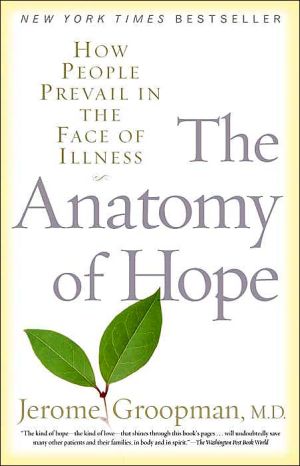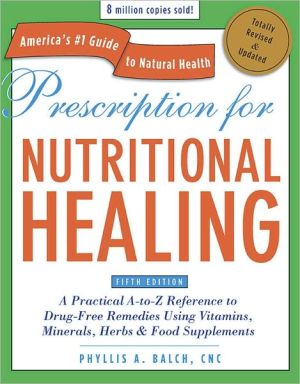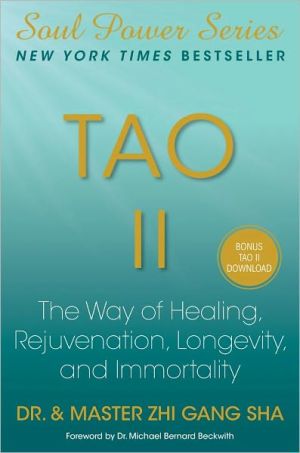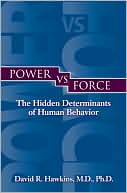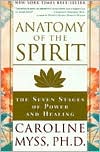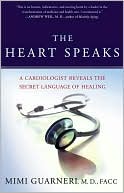The Anatomy of Hope: How People Prevail in the Face of Illness
Why do some people find and sustain hope during difficult circumstances, while others do not? What can we learn from those who do, and how is their example applicable to our own lives? The Anatomy of Hope is a journey of inspiring discovery, spanning some thirty years of Dr. Jerome Groopman’s practice, during which he encountered many extraordinary people and sought to answer these questions.\ This profound exploration begins when Groopman was a medical student, ignorant of the vital role of...
Search in google:
Why do some people facing difficult circumstances find and sustain hope, while others do not? And what can we learn from those individuals who hold on to hope? How is their example applicable to our own lives? In his illuminating and inspiring book, Harvard medical school professor and New Yorker staff writer Jerome Groopman strives to answer such questions. Spanning some 30 years of his clinical practice, Dr. Groopman explores the many ways in which hope contributes to healing. Complete with artfully crafted plot, character, dialogue, denoument and epiphany, the book begins from a point of abject ignorance - when the author was a medical student and did not recognize the role of hope in patients' lives - and goes on to chronicle Groopman's growing understanding - and utilization - of hope in the healing process. The New York Times If there is an ''anatomy'' here, it isn't an archetypal, unitary anatomy. Instead, hope turns out to be something negotiated between patients and physicians, imagined and reimagined at every visit. Oncologists need to rely on an incredible team of specialists: palliative-care physicians, social workers, psychologists and psychiatrists. Even so, the day-to-day practice of oncology is routinely humbled by the task. In its most introspective passages, Groopman's book manages to convey the perverse subtleties of these negotiations: Dan has to be tricked into hope; for Eva, hope becomes a joke that she snickers at, but never quite gets. In the end, you might not know how to define hope precisely - but that seems to be the point. Groopman succeeds principally because he refuses to offer a simple, easily digestible thesis. — Siddhartha Mukherjee
CHAPTER 1\ Unprepared\ \ In July 1975, I entered my fourth and final year of medical school at Columbia University in New York City. I had completed all my required courses except surgery and was eager to engage in its drama.\ Surgeons acted boldly and decisively. They achieved cures, opening an intestinal blockage, repairing a torn artery, draining a deep abscess, and made the patient whole again. Their art required extraordinary precision and self-control, a discipline of body and mind that was most evident in the operating room, because even minor mistakes—too much pressure on a scalpel, too little tension on a suture, too deep probing of a tissue—could spell disaster. In the hospital, surgeons were viewed as the emperors of the clinical staff, their every command obeyed. We students were their foot soldiers. I was intoxicated with the idea of being part of their world.\ The surgical team I joined was headed by Dr. William Foster. Foster was a tall, imposing man with sharp features like cut timber. His rounds began at dawn, followed by two or three surgeries that lasted until late afternoon. As is typical in a teaching hospital, all of Dr. Foster's patients were assigned to medical students who learned the basics of diagnosis and treatment by following cases. Not long after I began the course, I was designated as the student to help care for Esther Weinberg, a young woman who had a mass in her left breast.\ Esther Weinberg was twenty-nine years old, full-bodied, with almond-brown eyes. She was a member of the Orthodox Jewish community in Washington Heights, the neighborhood adjoining Columbia's medical school. When I entered her room, Esther was lying on the bed, reading from a small prayer book. Her head was covered by a blue kerchief in the typical sign of modesty among married Orthodox women, whose hair, as a manifestation of their beauty, is not to be seen by men other than their husbands.\ "I'm Jerry Groopman, Dr. Foster's student," I said by way of introduction. I wore the uniform of the medical student, a short, starched white jacket with my name on a badge over the right breast pocket. The badge conspicuously lacked the initials "M.D." Esther quickly took my measure, her eyes lingering over my name badge.\ I did not reach out to shake her hand. Men do not touch strictly Orthodox women, even in a casual way.\ Esther's eyes returned to my name badge, then to my face. I guessed at what was crossing her mind: whether my not shaking her hand indicated that I was Jewish and knowledgeable of the Orthodox prohibition, or simply an impolite student. "Groopman" was Dutch in origin, not a giveaway. Dr. Foster had described Esther as anxious, and I felt that disclosing our shared heritage would put her at ease.\ "Shalom aleichem," I said, the traditional greeting of "Peace be with you."\ Instead of offering a welcoming smile, her face drew tight.\ Following protocol, I began the clinical interview, which includes taking a family and social history. Esther Weinberg, nee Siegman, was born in Europe in 1946. Her family was from Leipzig, Germany, and of its more than one hundred members, only her parents had survived the Nazi camps. The Siegmans immigrated to America in the early 1950s. Esther married at the age of nineteen, had her first child—a girl—a year after the wedding, and then twin girls eighteen months later. Her father died of a stroke not long after. Over the last year, she had worked as the personal secretary for the owner of a cleaning service in midtown Manhattan; her job was strictly clerical, without exposure to toxic solvents that can be carcinogenic.\ One of the primary risk factors for breast cancer is a family history of the disease. Esther had limited knowledge of those who had perished in the war, but she recalled no afflicted relatives. Another major risk is prolonged and uninterrupted exposure to estrogen, which occurs when menarche, the onset of menses, happens at a very young age, or when pregnancy occurs later in life or not at all. But Esther had entered puberty at thirteen, a typical time, and carried and nursed three children in her twenties. This early motherhood would, if anything, lower her risk for breast cancer.\ I conducted the physical examination that I was taught to perform specifically on women, to convey a sense of propriety and respect for their body. I covered each breast in turn as I palpated for irregularities. I was taken aback by what I found. The mass in her left breast was very large, about the size of a golf ball, easily felt above the nipple. There were many lymph nodes in the left armpit, also large and rock-hard.\ For a cancer to grow to this size, and to spread into the adjoining lymph nodes, takes many months, if not years. Its prognosis, dictated by the dimensions of the tumor and the numbers of lymph nodes containing metastatic deposits, was very poor. How could a seemingly attentive young woman have waited so long to consult a doctor?\ I did not ask. Dr. Foster strictly defined boundaries for students on his surgical team. Our role was to observe and learn, to do only what he told us to do.\ "We will be making rounds with Dr. Foster later in the day," I said. "I wish you the best with the surgery."\ "God willing" was her reply.\ I started to leave.\ Esther called after me, "Can I talk to you?"\ "Of course," I said. A patient choosing to talk to us students made us feel very much like the doctors we wanted to be.\ "Maybe later," she said uncertainly.\ That afternoon, William Foster stood at the foot of Esther Weinberg's bed, flanked on his left by his three students, and on his right by the team's two residents. The waning July daylight cast long shadows across the room. I summarized the reason for admission, the physical findings, and the planned procedure, directing my words to Dr. Foster. The mass was almost certainly malignant, and it appeared to be quite advanced; it would first be treated by surgery, followed by chemotherapy. I went on with my charge as a student, reviewing for the team what Mrs. Weinberg had been told by Dr. Foster in his office about the impending operation. After she was anesthetized in the operating room, a biopsy would be taken of the mass, and if it proved to be malignant, as expected, a radical mastectomy would be performed right away. This was the approach handed down from William Halsted, an eminent surgeon who practiced in the early 1900s at Johns Hopkins.\ Dr. Foster nodded and walked deliberately to the left side of the bed. He held Esther Weinberg's hand in his. He asked if she had any questions about the impending operation.\ "Will Dr. Groopman be with me when I wake up after the surgery? I'd like him there."\ Dr. Foster shot me a brief, quizzical look.\ I was unsure why Esther wanted me at her side when she regained consciousness. I studied her face for a clue, but it revealed none.\ "Mr. Groopman, like every student, follows his patients from the time of admission into the operating room and then through postoperative care. Be assured that I will discuss fully with you what we found at surgery and what next steps need to be taken."\ Esther Weinberg's case was the first on the day's schedule. I scrubbed next to Dr. Foster and the senior resident. There was no idle chatter before surgery. We marched single file into the OR, Dr. Foster leading, the senior resident behind him, and I last, befitting my status. The anesthesiologist had already put Esther under. Foster nodded to me, and I swabbed an iodinelike antiseptic in concentric circles over the skin of her left chest. Then I laid sterile drapes around the painted breast.\ Since beginning the surgery course on the first of the month, I had assisted in several operations and seen how the operative field was treated, as if it were a domain distinct from a larger living human being. The surgeon initially identified the relevant anatomical landmarks, like a surveyor delineating his planes. This promoted psychic detachment, lowering the emotional temperature and facilitating the intense concentration the cutting required. A stylized sequence reinforced this mind-set. Each set of incisions was followed by a formal appraisal of the newly exposed anatomy and a resetting of landmarks. The aim was to fully encompass the diseased region with minimum destruction to surrounding healthy tissues and maximum preservation of normal structures. But today's operation was different. In the event of a radical mastectomy, total destruction of the normal anatomy was planned. The mammary tissues of the breast would be removed, along with the muscles overlaying the chest wall, including the pectoralis and all the lymph nodes of the armpit. What would remain were scar and ribs. This draconian approach was rooted in Halsted's contention that cancer cells migrated stepwise from the primary tumor into the surrounding tissues and then, much later, through the bloodstream to distant sites like liver and bone. Only by extirpating a complete block of flesh on the chest could the surgeon remove the cancer cells hiding beneath the breast. Dr. Foster had lectured at length on how Halsted's insight had advanced the treatment of breast cancer from a plethora of haphazard operations to a uniform and highly scientific surgery.\ Dr. Foster delineated the margins of the breast mass above Esther's left nipple and then instructed the resident to biopsy it. He made an incision and retrieved a wedge of gritty, glistening tissue. A pathologist was called to perform a "frozen section." He would flash-freeze part of the mass and immediately examine it under the microscope to determine whether malignant cells were present. If he saw them, the mastectomy would proceed.\ Our wait in the OR was a short and silent one. Dr. Foster seemed deeply absorbed in his thoughts, and neither the resident nor I dared disturb him. The pathologist reentered the OR. His face was grave. There was no doubt about what he had seen on the frozen section.\ Dr. Foster began making bold strokes around the circumference of the breast. I held a cautery, and as Dr. Foster cut, he directed me to burn the ends of small bleeding vessels. Wisps of acrid smoke with the distinctive odor of charred flesh wafted from the cauterized vessels. My stomach tightened.\ After over three hours, the dissection was complete. When the breast en bloc was lifted from the chest wall, globules of fat and lymph seeped from its base, the underlying muscles raw and bleeding. More than a dozen lymph nodes had been removed from the axilla.\ My mind drifted. I looked up from the operative site to the tube in Esther's mouth that delivered the anesthetic. She would awake to a drastic change in her form. It was impossible to predict how she would react. But I imagined that being Orthodox and married, with an established faith and family, would help her cope.\ The recovery room was a large open space brightly illuminated by overhead panels of fluorescent lights. At the entryway was a board on which each patient's name was written next to the number of the bed the patient occupied. A nurse and I wheeled Mrs. Weinberg on a gurney into the recovery room, which was filled with other patients. We stopped to write her name on the board. "Foster's radical?" the clerk at the board asked. I nodded. "Bed six," he directed.\ Using the undersheet for leverage, we lifted Esther onto her assigned bed. A harsh chorus of voices resonated in the room—"Run more saline in that line"; "His pressures are low, ramp up the dopamine"; "Check her oxygen, she looks a little blue around the lips." Dr. Foster marched through the din like a reigning royal. He dispatched the resident to scrub for the next case. Ordinarily, I would have returned to the wards to assist in chores. But Esther had been promised that I would be at her side when she awoke.\ I looked down at her. Beads of perspiration glistened on her forehead. Her hair, matted by the sweat, was cropped close to be easily covered by a tichel.\ Dr. Foster squeezed her right hand and said her name several times until her eyes opened and stayed open. She struggled to focus, the effect of the anesthetics still in her system.\ "Mrs. Weinberg, the surgery is completed." Dr. Foster paused. "I'm sorry, we had to remove the breast."\ Esther was silent for a while, then nodded slowly and turned toward me. "Groopman, you'll understand," she whispered. I held her gaze for a long moment, but her glazed eyes seemed opaque. She soon drifted back to sleep.\ Just outside the recovery room, Dr. Foster stopped abruptly. "What did she mean by that?"\ I had no idea.\ Three days later, I received some clue to Esther's enigmatic comment.\ On morning rounds Dr. Foster told Esther that because of thelarge size of the tumor and its spread to more than a dozen lymph nodes, the cancer was likely to recur soon. Chemotherapy would now be given to destroy the lurking cells in her body; it would begin once the mastectomy healed. "Chemotherapy is unpleasant," Dr. Foster allowed, "but potentially lifesaving." Foster himself would oversee the drug treatment, a common practice among cancer surgeons of his generation.\ I visited Esther alone later that day. I had decided to take the initiative and ask her to explain her statement in the recovery room. But it didn't prove necessary.\ "You should call me Esther. May I call you Jerry?"\ "Of course," I said.\ "Jerry, I was unsure at first if I could trust you. Can I trust you?"\ Out of reflex, I extended my hand and grasped hers. Esther did not withdraw. She smiled, but it was a smile forced to fight back tears.\ "My cancer is a punishment from God," Esther said flatly.\ I began to reply, but Esther stopped me. "Wait."\ She explained that Markus Weinberg, her husband, was from the same German-Jewish community in Washington Heights and had been chosen for her by her parents. He was twenty-one at the time, and she was nineteen. They had met twice before the wedding, and she knew on each occasion that she could not love him. She described him as meek and complacent, with little interest in the larger world. He worked as a grocer in a family business not far from their home. Esther exchanged few words with him, mostly about who would do what chore, or whether one of the children was progressing well in her schoolwork.\ "I felt I could breathe only out of the house. Inside, I couldn't."\ She knew that even with the formless skirts extending to her ankles, the billowing blouses with sleeves reaching her wrists, and her hair covered by the tichel, men turned when they passed her on the street. And she saw that her boss, middle-aged with a family in New Jersey, paid special attention to her. He told jokes that seemed designed to make her laugh, complimented her work and small changes in her appearance, like when she wore amber earrings that he said offset her eyes.
Introduction: The Anatomy of HopeA Note from the AuthorCh. 1Unprepared3Ch. 2False Hope, True Hope28Ch. 3The Right to Hope58Ch. 4Step by Step82Ch. 5Undying Hope121Ch. 6Exiting a Labyrinth of Pain147Ch. 7The Biology of Hope161Ch. 8Deconstructing Hope191Conclusion: Lessons Learned208Acknowledgments213Notes217Index237
\ The New York TimesIf there is an ''anatomy'' here, it isn't an archetypal, unitary anatomy. Instead, hope turns out to be something negotiated between patients and physicians, imagined and reimagined at every visit. Oncologists need to rely on an incredible team of specialists: palliative-care physicians, social workers, psychologists and psychiatrists. Even so, the day-to-day practice of oncology is routinely humbled by the task. In its most introspective passages, Groopman's book manages to convey the perverse subtleties of these negotiations: Dan has to be tricked into hope; for Eva, hope becomes a joke that she snickers at, but never quite gets. In the end, you might not know how to define hope precisely - but that seems to be the point. Groopman succeeds principally because he refuses to offer a simple, easily digestible thesis. — Siddhartha Mukherjee\ \ \ \ \ The Washington PostGroopman writes with profound compassion. The kind of hope -- the kind of love -- that shines through this book's pages could have saved a cardiac patient like my father who, despising doctors and distrusting their motives, chose to die when his heart failed, rather than submit to surgery. It will undoubtedly save many other patients and their families. In body and in spirit. — Judith Warner\ \ \ Publishers WeeklyIn this provocative book, New Yorker staff writer and Harvard Medical School professor Groopman (Second Opinions; The Measure of Our Days) explores the way hope affects one's capacity to cope with serious illness. Drawing on his 30-year career in hematology and oncology, Groopman presents stories based on his patients and his own debilitating back injury. Through these moving if somewhat one-dimensional portraits, he reveals the role of memory, family and faith in hope and how they can influence healing by affecting treatment decisions and resilience. Sharing his own blunders and successes, Groopman underscores the power doctors and other health care providers have to instill or kill hope. He also explains that hope can be fostered without glossing over medical realities: "Hope... does not cast a veil over perception and thought. In this way, it is different from blind optimism: It brings reality into sharp focus." In the final chapters of the book, Groopman examines the existing science behind the mind-body connection by reviewing, for example, remarkable studies on the placebo effect. By the end of the book, Groopman successfully convinces that hope can offer not only solace but strength to those living with medical uncertainty. (Jan.) Copyright 2003 Reed Business Information.\ \ \ \ \ Library JournalReaders wary of the "miraculous recovery" genre need not pass on Groopman's latest book (after The Measure of Our Days; Second Opinions). Despite its title, the text contains a satisfyingly gritty realism-in fact, Groopman's first four case studies end in death. That, in itself, quickly drew this reviewer into subsequent chapters in which the author develops the concepts of hope and choice and pursues both his personal interest in and his professional quest for their biological effects. Chair of medicine at Harvard and staff writer in medicine and biology for The New Yorker, Groopman investigates recent research detailing the effects of placebos, emotion, and belief on the nervous system. He finds that hope can begin a domino effect that neither patient nor health provider can predict. In comparison, Dr. Howard Spiro, in The Power of Hope, focuses on placebo history and research and its place in the context of other alternative remedies. Excelling in narrative, The Anatomy of Hope is strongly recommended for most public libraries. [Previewed in Prepub Alert, LJ 9/1/03.]-Andy Wickens, King Cty. Lib. Syst., WA Copyright 2003 Reed Business Information.\ \ \ \ \ Kirkus ReviewsDoctor/author Groopman (Second Opinions, 2000, etc.) insightfully examines the nature of hope and the role it plays in recovery from illness. Stories from his medical education and 30 years of practice reveal what New Yorker staff writer Groopman (Medicine/Harvard) has learned about the connections between hope and illness. He was still in medical school when an Orthodox Jewish woman confided in him that she believed her cancer was a punishment from God. "Well prepared for the science [but] pitifully unprepared for the soul," Groopman was unable to reach out and give her the hope she needed to pursue a course of therapy. Then, as a young resident, he followed an older doctor's lead in offering false hope to a terminally ill woman, a disturbing experience that subsequently led him to veer too far in the direction of hope-crushing cold facts as a specialist in oncology and hematology. Perhaps the most powerful story Groopman tells is about a professor of pathology who, in full possession of all the grim facts about his stomach cancer, nevertheless held onto hope, persisted in excruciating therapy, and survived. From his patients, the author observed that hope is at the very heart of healing, whether it derives from faith in God and belief in an afterlife or from a personal philosophy that gives meaning to life and mortality. The author's personal experience of pain, frustration, and despair was also instructive. After suffering severe back pain for 19 years, Groopman followed the advice of a physician to seek relief by changing his beliefs about pain and acting on those new beliefs. Experiencing for himself the physical changes caused by regained hope, he began to question neurologists,experimental psychologists, and others about the biology of hope. He relates their discoveries here, going on to consider why some people can sustain hope but others cannot and clearly delineating the difference between false hope and true hope. A thoughtful message, movingly yet unsentimentally presented by a physician alert to medicine's human as well as its scientific side. Agent: Suzanne Gluck/William Morris\ \
